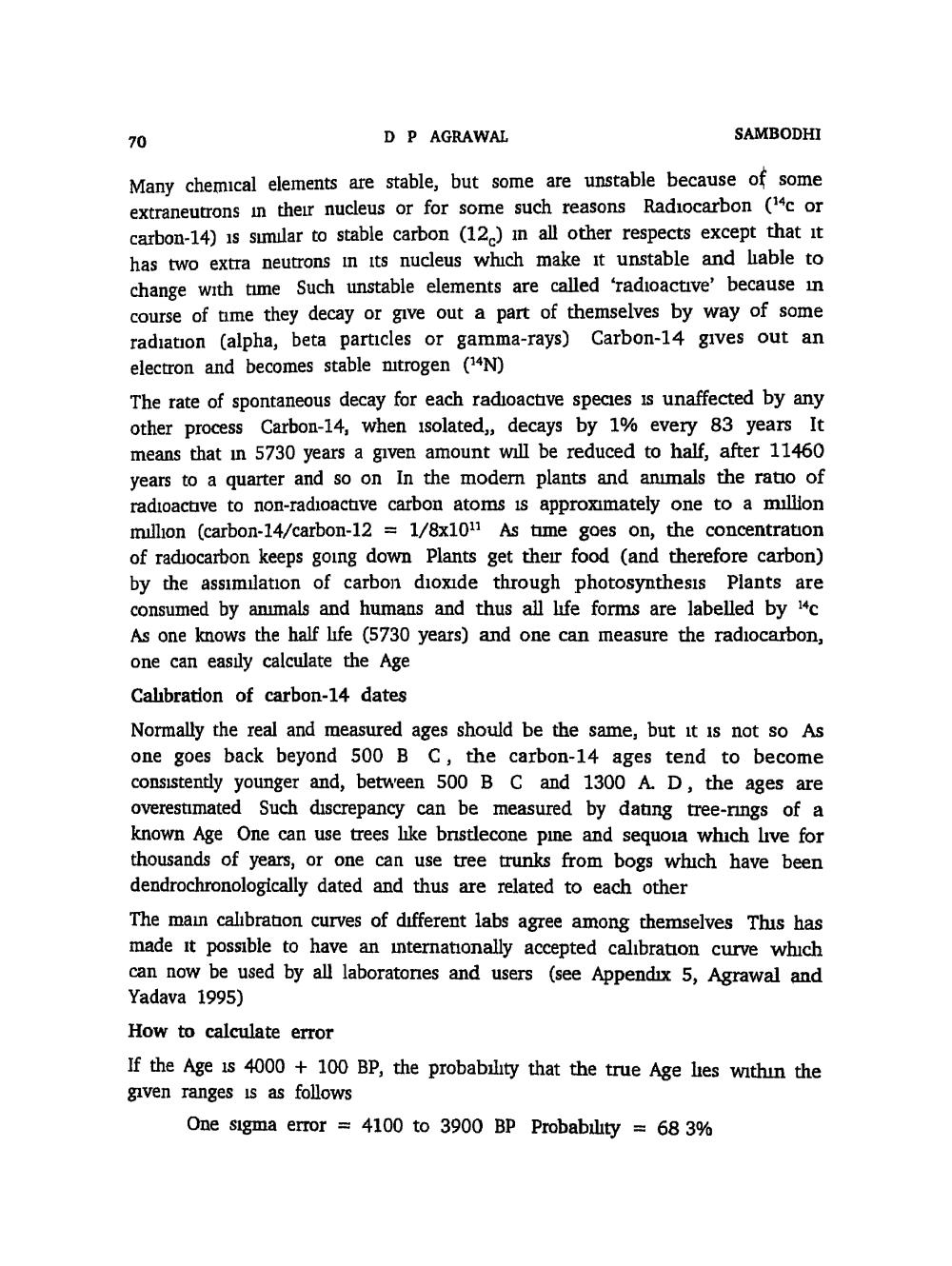________________
DP AGRAWAL
SAMBODHI
70
Many chemical elements are stable, but some are unstable because of some extraneutrons in their nucleus or for some such reasons Radiocarbon (14c or carbon-14) is similar to stable carbon (12.) in all other respects except that it has two extra neutrons in its nucleus which make it unstable and liable to change with time Such unstable elements are called 'radioactive' because in course of time they decay or give out a part of themselves by way of some radiation (alpha, beta particles or gamma-rays) Carbon-14 gives out an electron and becomes stable nitrogen (14N) The rate of spontaneous decay for each radioactive species is unaffected by any other process Carbon-14, when isolated,, decays by 1% every 83 years It means that in 5730 years a given amount will be reduced to half, after 11460 years to a quarter and so on in the modern plants and animals the ratio of radioactive to non-radioactive carbon atoms is approximately one to a million million (carbon-14/carbon-12 = 1/8x1011 As time goes on, the concentration of radiocarbon keeps going down Plants get their food (and therefore carbon) by the assimilation of carbon dioxide through photosynthesis Plants are consumed by animals and humans and thus all life forms are labelled by 14c As one knows the half life (5730 years) and one can measure the radiocarbon, one can easily calculate the Age Calibration of carbon-14 dates Normally the real and measured ages should be the same, but it is not so As one goes back beyond 500 BC, the carbon-14 ages tend to become consistently younger and, between 500 B C and 1300 A. D, the ages are overestimated Such discrepancy can be measured by dating tree-rings of a known Age One can use trees like bristlecone pine and sequoia which live for thousands of years, or one can use tree trunks from bogs which have been dendrochronologically dated and thus are related to each other The main calibration curves of different labs agree among themselves This has made it possible to have an internationally accepted calibration curve which can now be used by all laboratories and users (see Appendix 5, Agrawal and Yadava 1995) How to calculate error If the Age is 4000 + 100 BP, the probability that the true Age lies within the given ranges is as follows
One sigma error = 4100 to 3900 BP Probability = 68 3%




